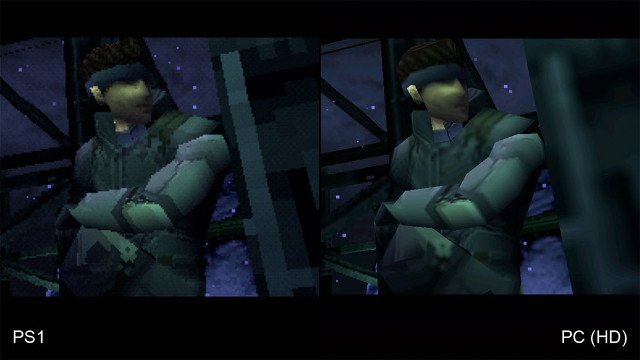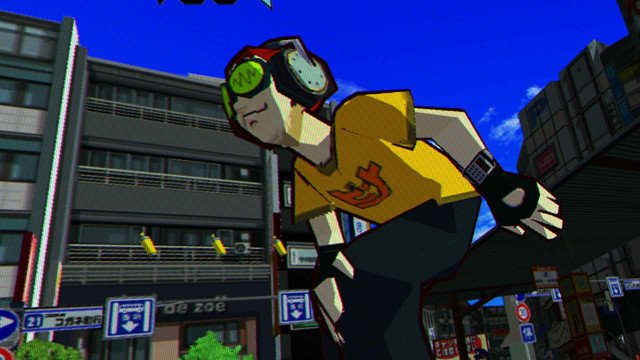Do you remember the first time you were blown away by a game’s graphics? Was it Resident Evil on the PlayStation? Final Fantasy VII? Super Mario 64? Well, I’m sorry to be the one to break it to you, but they all look like hot, stinkin’ garbage now. We’ve all searched for footage of our old favorites on YouTube, or repurchased them at a later date for one last playthrough. We’ve then been forced to ask ourselves the following question: “How did I ever think this looked good?”
Seeing a video game you once loved looking old and miserable is a little like visiting your grandparents’ house; you still love them, but you can’t help but feel as though they’d be better off if you put them back in their cupboard. So why, when we think back to these retro games, do we remember them looking much better? Are our rose-tinted glasses really that strong, or is there a more technical explanation? Let’s take a look.
Explanation #1: New Benchmarks
The first and most obvious explanation is that your frame of reference for video game visuals is always limited to the games of that particular time period. If you’re a gamer in 1998, you’re going to consider the likes of Half-Life and Metal Gear Solid as the best-looking games of all time, because back then they were practically unrivaled on their respective platforms. As such, games released prior to 1998 were retroactively compared to a new standard, making older games look practically primitive by the new benchmark that had been set.
“Photorealism” is a term that is bandied around often when it comes to describing impressive game graphics, but in reality, we have yet to see a game that actually manages to pull it off. Even the most beautiful current-gen releases can’t truly be mistaken for real images, and even though at just the right screenshots some may make you do a double take, ultimately when games are in motion, you’re firmly aware that you’re playing a video game.
Take Epic Games’ recent “live captured digital human” technology, which stretches firmly into uncanny valley territory as a result of CGI character Siren’s hyper-realistic appearance and animation, though struggles when it comes to replicating the human mouth. It’s totally impressive, though still not 100% convincing:
Explanation #2: It Was a Trick of the Mind
Back in gaming’s formative years, developers were forced to work with incredibly limited color palettes that didn’t offer a great deal of variety. To break free of the 61-color RGB or 64-color YPbPr confines they were limited to, developers utilized a technique called dithering in order to make their games appear as though they had more depth in color.
Dithering is a method in which two different colors are placed next to one another and blended together with different regularities, a trick which deceives the human eye by way of making it see a different color. For instance, when combining black and white, dithering would lead to us perceiving the color gray. This method worked incredibly well on old CRT TVs, with their lack of clarity allowing for the dithering to slip by unnoticed.
The effects of dithering can be seen using emulators, which can take an old game and render it in a high-definition resolution. Take the below screenshot of Metal Gear Solid, with the image on the left appearing to show a greater color variety largely as a result of the dithering technique, whereas the image on the right looks incredibly blocky even by PS One standards:

Explanation #3: Retro Games DID Look Better Back Then
Yes, a large reason why retro games look worse now than they did back then is down to your nostalgia goggles, or tricks that the developers pulled to convince you otherwise. However, if you’re playing an old game in 2018, then chances are that your eyes aren’t deceiving you and that it is uglier than you remember it being.
In a pre-HD world, developers made games to benefit the technology that was at the consumer’s disposal at that time. Prior to the release of the Dreamcast and its 480i resolution, most games outputted in a 240p resolution — for the youngsters among you, that’s like when you have a poor internet connection and YouTube videos look like grease has been smeared on top of them.
These 240p consoles, which ranged from the NES to the original PlayStation, used a progressive resolution rather than the interlaced resolutions of 480i consoles. Within each frame of a progressive resolution there’s a complete image that fills the screen, with them being most common in CRT TVs.

After CRT televisions stopped being the common standard, analog TVs outputting in 480i used interlace resolutions (that’s what the “i” stands for, don’t you know), with them displaying a complete image in every other frame.

But why is this significant? Well, most modern HD TVs will now automatically output these 240p games in a 480i resolution, meaning that their progressive resolutions switch to interlaced and they look a lot worse in the process. With 240p now being a mostly unused resolution, current TVs making them look ugly isn’t exactly due to these games being a lot worse-looking than you remember, but rather the result of new technology being unable to display them in the resolution that they were intended to be displayed in.
The quality of the image in older games was also firmly dependent on the size of your TV. These days, it’s generally accepted that the bigger your TV, the more impressive your picture quality will be. However, the use of scanlines in retro games utilizing progressive resolutions will make the blank lines between scanlines appear larger, making the images look less smooth and more faded in the process.
So yes, while retro games may look a lot worse these days because you’ve since had experience with higher quality graphics, you’re not wrong to think that games from your childhood look awful compared to how you remember them. With the technical tricks used during previous decades no longer applicable thanks to our high-definition TVs, if you want to experience old games in the manner in which they’re preserved in your memory, you’re going to need to get yourself an old CRT television first.










